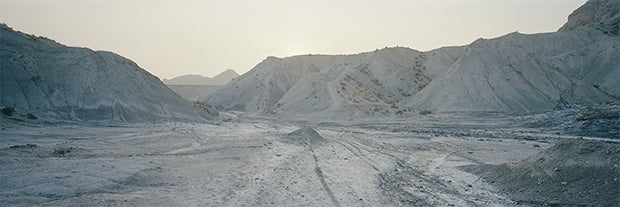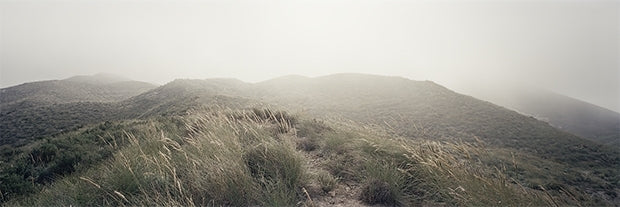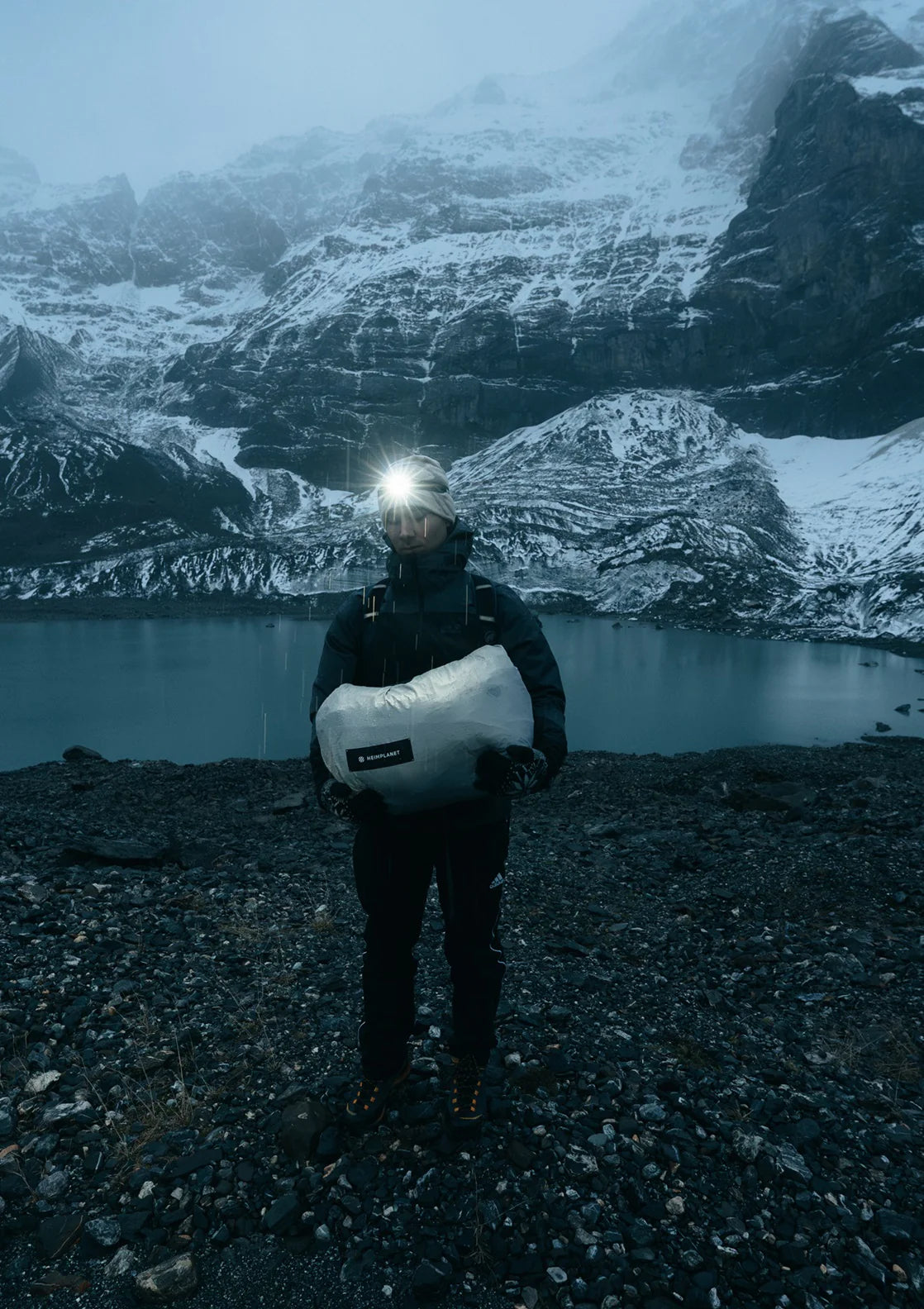TABERNAS DESERT
The Tabernas desert is located in the south of Spain, 40 km north of Almeria. Almeria is known for its greenhouses that supply all of Europe with fruit and vegetables every season. This is made possible by the unusual climatic conditions in the region.

It rarely rains and the sun shines more often than in any other place in Europe. This is also one of the reasons why the Desierto de Tabernas is known for something quite different, even if most people don't notice it immediately.

A barren, rocky and dusty plain stretches across a mountain range cut off from the humid Mediterranean air. Rugged with hills and valleys, overgrown with shrubs and colourless grass, the 280 square kilometre small landscape is reminiscent of the great deserts of North America.

This is why many European filmmakers of the sixties discovered the Desierto de Tabernas as an ideal setting for realistic western films, even with a small budget. It was above all Sergio Leone who promoted the emerging Italian Western hype and shot his most famous works in the area around the provincial town of Tabernas. For my bachelor's thesis, with which I completed my studies in photo design in Munich, I was looking for an unusual subject, an unusual place.
The desert was particularly impressive for me. The colour worlds, as well as the light moods, have fascinated me for a long time and my thesis seemed like the perfect opportunity to finally work in a desert. But in which desert and on which subject? Certainly there are many deserts in the world, but a work based only on landscapes was not satisfying for me. No, it had to be more. So I set out on a search, scoured the internet and googled deserts, deserts, deserts....


My work constantly refers to unfinished, dilapidated or abandoned structures: ski villages that are abandoned like ghost towns after the snow melts, waiting for the next winter and the thousands of skiers who will bring them back to life. Or the Formula 1 race track in Singapore, which once a year changes an entire city by stopping traffic, public transport and entire neighbourhoods from their daily routine.
My thesis was to go in a similar direction of abandoned structures and dilapidated buildings. By chance, I had heard about the area in southern Spain while talking to an acquaintance. A desert! He told me how he and some friends had driven 2400 km in an old Ford Escord to Tabernas to go hiking. That was twenty years ago. In the middle of the desert, in a small valley, they discovered a shiny metallic, strange object.
It looked like a UFO. Curious, they examined what they had discovered. It turned out to be a construction made of cardboard, wood and shiny foil. A film set. For a science fiction film. But the film crew was nowhere to be found, and the poor condition of the "UFO" suggested that they had not been there for a long time. The story made me curious. An old and abandoned film set in the middle of a dusty, barren and deserted environment.
I researched further: Since the 1960s, the Desierto de Tabernas has developed from an inconspicuous, dry and unused desert into a busy film set. Especially for western films, the conditions were ideal. In the early sixties, Sergio Leone coined a completely new genre: the "spaghetti western" or "Italian western". Leone was impressed by the American films that had dominated the film market until then, and he was convinced that European western productions could be just as successful.
"Per and Pugno di dollars" ("For a Fistful of Dollars") from 1964 was his first attempt in this genre. The budget was tight, however, and it was not enough to hire great actors like Henry Fonda and James Coburn. Instead, the role was given to the still unknown television actor Clint Eastwood. And the film set had to stay in Europe for financial reasons. "For a Fistful of Dollars" was therefore largely shot in the Tabernas desert, similar to the typical Western landscapes of North America, and despite the doubting critics, who either paid no attention to the film or trashed it, "For a Fistful of Dollars" became a sensational success.
Clint Eastwood became an international film star overnight and "For a Fistful of Dollars" left its mark on an entire film generation. With its financial success and relatively low production costs, the "Dollar Trilogy" flooded the market with spaghetti westerns. In the late sixties, the desert was a hot place and films were shot everywhere. Wild gunfights, stunts, cowboys on horseback looking for treasure and bandits looking for revenge - they all roamed the desert.

But all films needed scenery that didn't yet exist, in addition to the great landscapes. Unlike some deserts in America, there were no villages or buildings in the desert that fit the image of a western film. Everywhere in the Desierto de Tabernas, entire western villages appeared as if from nowhere, which had to be specially built for the film production. During filming, the sets were rickety and fragile to keep production costs down, as they only had to survive a certain production period. There were saloons, banks, forts and villages, made makeshift out of wooden frames, mats, plaster and some paint.
At times there were up to 14 villages and dozens of individual small film sets in the desert. After the filming, no one was interested in the buildings. They could not be used as normal houses, camps or barns, and there were no people who would have had any use for them. And since it was too early for a nature conservancy (the area only became a nature reserve in 1989), all the sets remained in the desert after the film crews had left.
Many directors used the existing sets left over from previous productions for their own productions, with only minimal changes in some cases (new colour, new props). As a result, many films were shot with exactly the same sets. But the long abandoned sets quickly fell apart due to the weather conditions in the desert. The constant strong winds and the sometimes heavy rains in winter completely destroyed the structures after a few years.
Many are hardly recognisable today. Because of the many films that were shot there, smaller productions, showmen, stuntmen and other actors flocked to the desert in the hope of getting a part in a film. In the heyday of the film industry in the Desierto de Tabernas, many of them got small roles as extras in a film or worked in different areas of film production. But the hype about the desert, which peaked with Sergio Leone's Once Upon a Time in the West, was soon over. After almost two decades, the desert became barren again as the film crews disappeared along with the money and jobs.
All that remains is a handful of extras who still try to revive the Western myth today. They work on the three remaining film sets that have been turned into theme parks: Texas Hollywood, Western Leone and Oasys. They stage stunt shows, drive guests in carriages through the dusty desert or pose for photos with children. You quickly notice that the golden days of the Wild West in Tabernas are long gone. The stunt shows seem superficial and improvised, and even the backdrops that are still used seem to be slowly falling into disrepair.

What remains is a melancholic mood that lingers over the entire Desierto de Tabernas. A mood that only die-hard fans of Clint Eastwood and Sergio Leone can escape when they indulge in a nostalgic hike through the desert. I couldn't get Ennio Morricone's famous melody out of my head.
In April 2013, I spent three weeks in the Desierto de Tabernas. I explored as much as I could, talking to tourists and cowboys, workers and travellers. I used a Linhof analogue medium format camera; a great camera that got me a lot of attention and made for impressive image quality. As the desert is only 30 km from the Mediterranean Sea, I decided to spend the nights there.
On the coast around Almeria there are many very small and cosy campsites for little money, which have not yet been converted into amusement parks or luxury resorts, as is often the case in Italy. Nevertheless, they offer much more comfort than the barren, dry desert where camping is strictly forbidden because the area has been declared a nature reserve. The campsites directly by the sea were the better choice for me.
I usually only stayed in one place for a few days before moving on to a new one. Early in the morning I would go out into the desert, wander around and take photos. During the long midday hours, when the sun is far too bright and glaring for photos, I would drive around in the car looking for new subjects, another film scene or interesting vantage points. In the afternoon I photographed again until late in the evening, and when it got too dark I returned to the campsite.
After three weeks and more than 100 exposed films, I packed my things and moved further south. I stayed another three days in the area around Gibraltar and Tarifa before returning to Germany to develop and scan my photos and successfully complete my dissertation.


